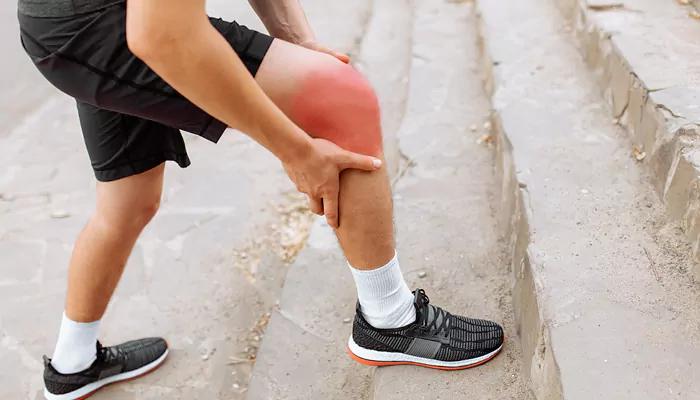
Heel pain is a common ailment among runners, often casting a shadow over the joy and benefits running brings.
Whether you're a seasoned marathoner or a casual jogger, heel pain can disrupt your routine and dampen your spirits. However, with the right approach, it's possible to alleviate this discomfort and get back on track. Let’s explore effective strategies for dealing with heel pain, ensuring that "no excuses" becomes your new mantra for running.
Understanding the Causes of Heel Pain
Heel pain in runners can arise from various sources, but it frequently traces back to conditions like plantar fasciitis, Achilles tendonitis, or structural imbalances. Running places significant stress on the foot's arch and heel, leading to inflammation or tears in the plantar fascia – the thick ligament that supports the arch. Additionally, runners with flat feet or high arches may experience increased strain, contributing to heel pain.
Other potential causes include Sever's disease (particularly in young athletes), stress fractures, arthritis, and nerve irritation. Identifying the underlying issue is crucial for effective treatment and prevention.
Treating Heel Pain – Immediate Steps
Take a Break
Initially, rest is paramount. Allow your feet to recover by reducing activities that exacerbate the pain. This doesn't mean complete inactivity but rather finding alternative exercises that don't stress the heel, like swimming or cycling.
Ice and NSAIDs
Applying ice to the affected area several times a day can help reduce inflammation and pain. Nonsteroidal anti-inflammatory drugs (NSAIDs), such as ibuprofen, are also effective. For a more natural approach, consider turmeric.
Stretching and Strengthening
Incorporating foot and calf stretches into your daily routine can enhance flexibility and reduce tension in the plantar fascia. Exercises like toe curls, arch lifts, and Achilles stretches are beneficial.
Orthotic Inserts
Using heel pads or custom orthotics can provide necessary support, distribute pressure evenly, and correct improper foot mechanics.
Night Splints and Walking Casts
In more severe cases, a night splint can keep the foot extended, preventing the plantar fascia from tightening overnight. A removable walking cast may also be considered for significant relief and healing.
When to Consult a Professional

If self-treatment doesn't yield improvement within a few weeks, it's time to see a specialist. Persistent heel pain may require a more thorough examination and treatment plan, potentially including corticosteroid injections or physical therapy. Surgery is rare but may be considered for chronic conditions not responding to conservative treatments.
Prevention – Keeping Heel Pain at Bay
Mindful Running Techniques
Evaluate your running form and footstrike patterns. Transitioning to a midfoot strike might reduce heel impact, though it's essential to make such changes gradually to avoid other injuries.
Choose Softer Surfaces
Whenever possible, opt for grass, dirt paths, or synthetic tracks over concrete. This can significantly decrease the impact on your heels and joints.
Proper Footwear
Invest in high-quality running shoes with adequate arch support and cushioning. Consider replacing them every 300-500 miles to ensure they provide sufficient protection.
Regular Stretching
Before and after running, dedicate time to stretching your calves, ankles, and feet. This can enhance flexibility and prevent tightness in the plantar fascia and Achilles tendon.
Maintain a Healthy Weight
Excess weight increases the strain on your feet. Achieving and maintaining a healthy weight can lessen this pressure and improve overall foot health.
Heel pain need not be a runner's fate. With proactive treatment, thoughtful prevention, and perhaps a few adjustments to your running regimen, you can overcome this hurdle. Listen to your body, prioritize recovery, and seek professional advice when necessary. Remember, the goal is to enjoy running without pain – so, no excuses, sir!












